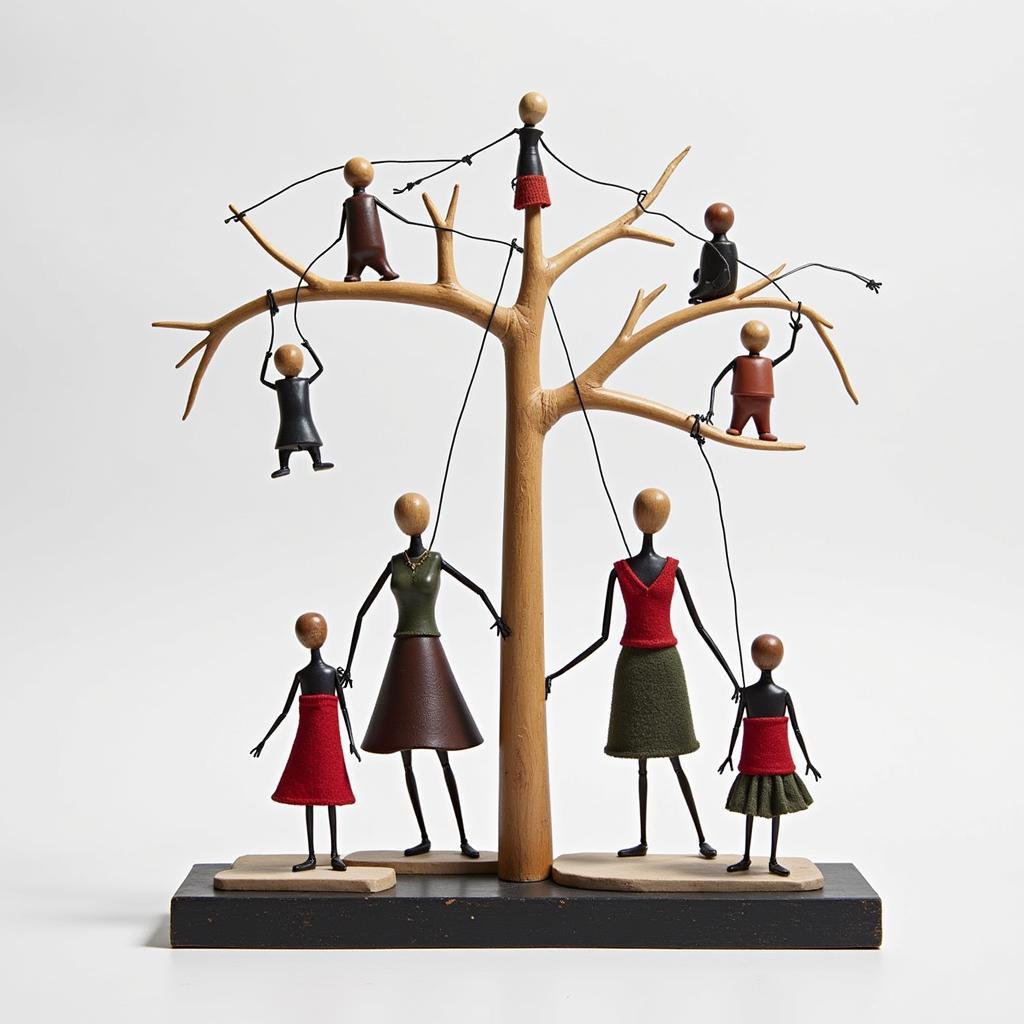Generational Trauma Art: Unmasking Hidden Scars
Generational trauma, a complex and often subtle inheritance, has found a powerful voice through art. Artists are increasingly using their creative platforms to explore the lasting impact of intergenerational wounds, giving visual language to experiences that often defy words.
The Canvas of Inherited Pain
 Abstract painting depicting generational trauma
Abstract painting depicting generational trauma
Generational trauma refers to the emotional and psychological wounds passed down through families and communities across generations. These wounds can stem from a variety of sources, including systemic oppression, war, genocide, displacement, and family dysfunction. While the initial trauma may have occurred in the past, its effects can reverberate through subsequent generations, impacting beliefs, behaviors, and relationships.
Art as a Bridge Across Generations
 Sculpture exploring family ties and history
Sculpture exploring family ties and history
Art provides a unique and potent medium for expressing and processing generational trauma. Unlike traditional therapy or conversation, art offers a non-linear, symbolic language that can communicate complex emotions and experiences that are difficult to articulate verbally. Through visual metaphors, evocative imagery, and symbolic representations, artists can externalize their inner struggles and connect with audiences on a visceral level.
Common Themes in Generational Trauma Art
Generational trauma manifests in diverse ways, influencing both the form and content of artistic expression. Some common themes explored in Generational Trauma Art include:
- Silence and Secrets: Many families grapple with unspoken pain and hidden narratives surrounding past traumas. Artists often depict themes of silence, secrecy, and the weight of unspoken burdens.
- Identity and Belonging: Generational trauma can disrupt an individual’s sense of self and belonging. Art exploring this theme might delve into questions of cultural identity, ancestral roots, and the search for a sense of place.
- Intergenerational Patterns: Artists often depict repeating patterns of dysfunction, abuse, or addiction, highlighting how trauma can be unconsciously replicated across generations.
- Resilience and Healing: While acknowledging the pain of the past, many artists also explore themes of resilience, healing, and the potential for intergenerational healing.
Finding Your Voice: Expressing Generational Trauma Through Art
 Expressing emotions through art therapy
Expressing emotions through art therapy
Creating art about generational trauma can be a cathartic and empowering experience. It allows individuals to:
- Bear witness to the past: Art can be a powerful way to acknowledge and honor the experiences of previous generations.
- Break the silence: By giving voice to silenced stories, artists can challenge stigma and create space for dialogue.
- Connect with others: Sharing one’s art can foster connection and understanding, reminding individuals that they are not alone in their experiences.
- Promote healing: The creative process itself can be therapeutic, allowing individuals to process their emotions and begin to heal from the wounds of the past.
If you are interested in exploring generational trauma through art, there are many resources available to support your journey. Art therapy, workshops, and online communities can provide guidance, encouragement, and a safe space for creative expression.



